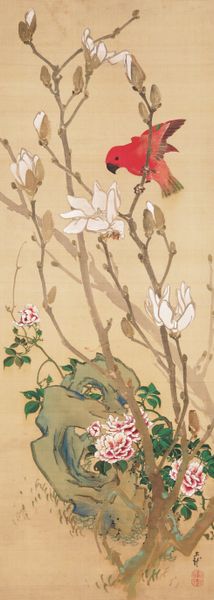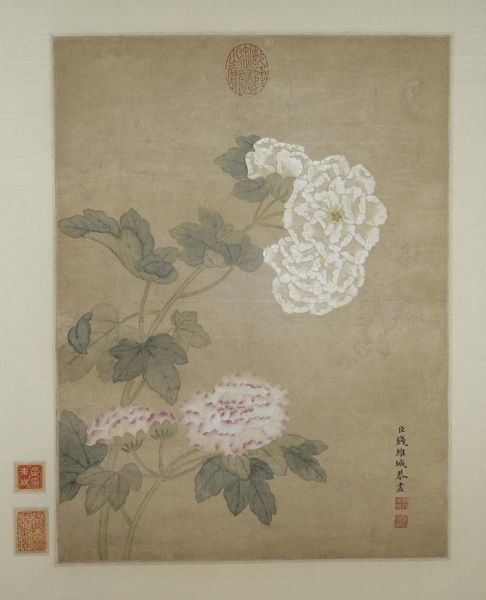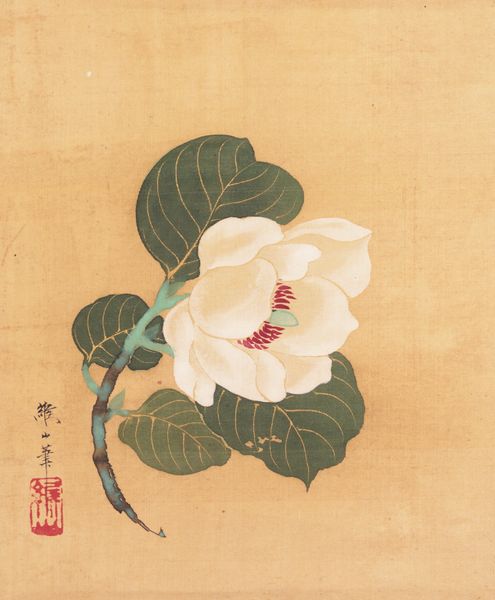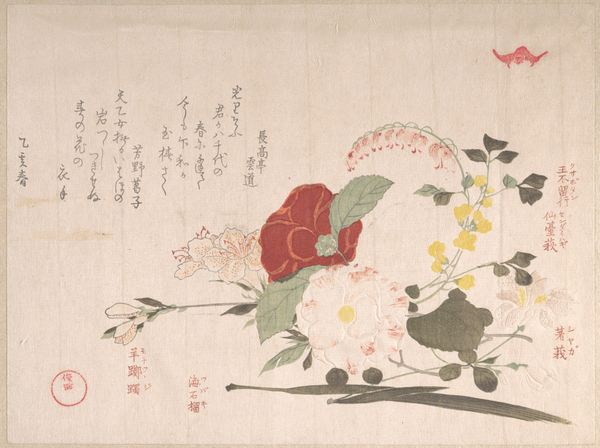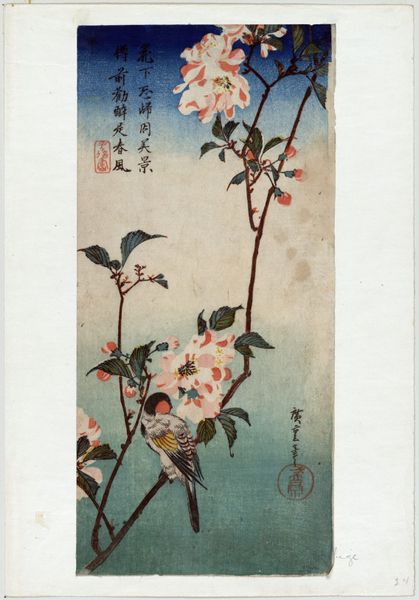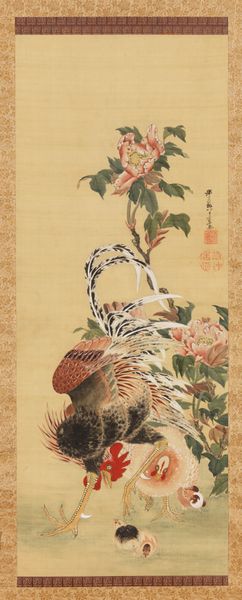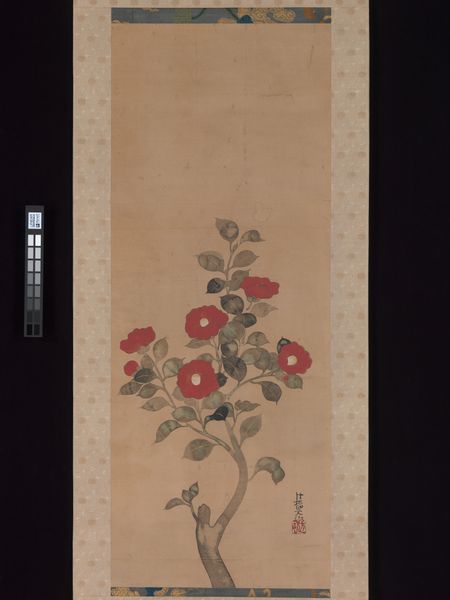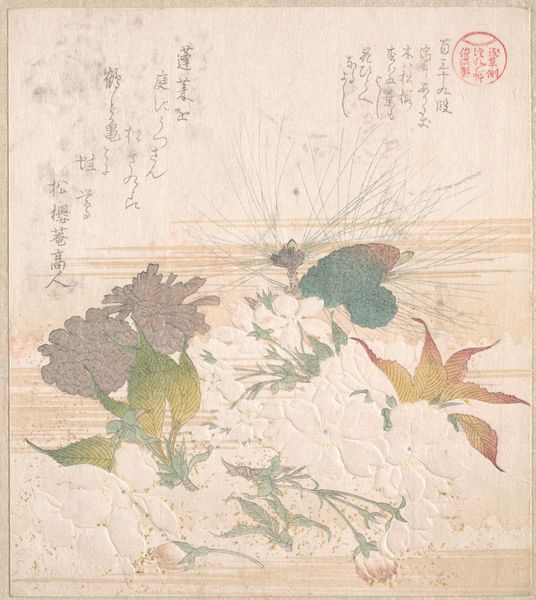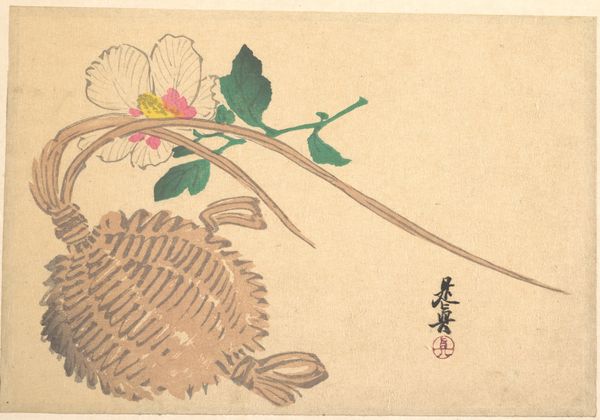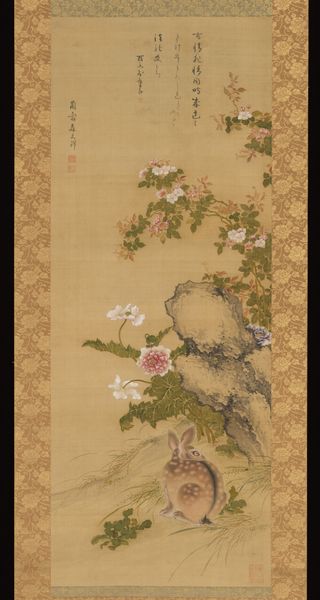
painting, watercolor, hanging-scroll, ink
#
water colours
#
painting
#
asian-art
#
ukiyo-e
#
form
#
watercolor
#
hanging-scroll
#
ink
#
orientalism
#
line
#
watercolor
Dimensions: 41 3/8 × 15 3/4 in. (105.09 × 40.01 cm) (image)75 9/16 × 19 9/16 in. (191.93 × 49.69 cm) (mount, without roller)
Copyright: Public Domain
Sakai Hōitsu painted these ‘Peonies in the Wind’ with ink and color on silk during the Edo period in Japan. Hōitsu came from a privileged background. As the son of a Lord, he could explore artistic pursuits, eventually becoming a prominent figure in the Rinpa school, known for its decorative and naturalistic style. Here, Hōitsu seems to be playing with traditional representations, using the motif of the peony, which often symbolizes wealth and status, and destabilizing it by placing the flowers in the wind. This could reflect the changing social dynamics of the Edo period, where the merchant class was gaining influence, challenging the established order. In this context, the painting feels emotionally charged, evoking a sense of impermanence and the fleeting nature of beauty. The wind-swept peonies invite us to reflect on the transient nature of life, and the ever-changing forces that shape our world.
Comments
minneapolisinstituteofart about 2 years ago
⋮
Two peonies in full bloom sway as a gust of wind pushes them forward—rain is coming. Every year, Japan has a rainy season from June to July called tsuyu, or “plum rain,” so named because the timing matches the ripening of plums. Although commonly depicted in Japanese paintings as a subject, peonies were not native to Japan but originated in China. Peonies exploded in popularity among gardeners in the late 1600s, ahead of the morning glory boom in the 1800s—reflected in the nearby painting of morning glories by Watanabe Nangaku. Artist Sakai Hōitsu shifted his creative approach after discovering the work of painter Ogata Kōrin’s. Sakai’s later works incorporate Ogata’s signature techniques such as tarashikomi—the application of a second layer of paint before the first is dry, resulting in a watery effect—seen here on the leaves.
Join the conversation
Join millions of artists and users on Artera today and experience the ultimate creative platform.
